On October 4, 2021, Core Nutritionals announced the Core Lifeline Series, a new lineup of health-minded supplements that attack individual issues and organ systems. The first product released was Core GUT, a comprehensive gut microbiome support supplement covered here today:
Core GUT: Support Your Gut with Pre-, Pro-, and Post-Biotics
This five-capsule beast brings us four incredible types of ingredients to get your GI tract back on track:
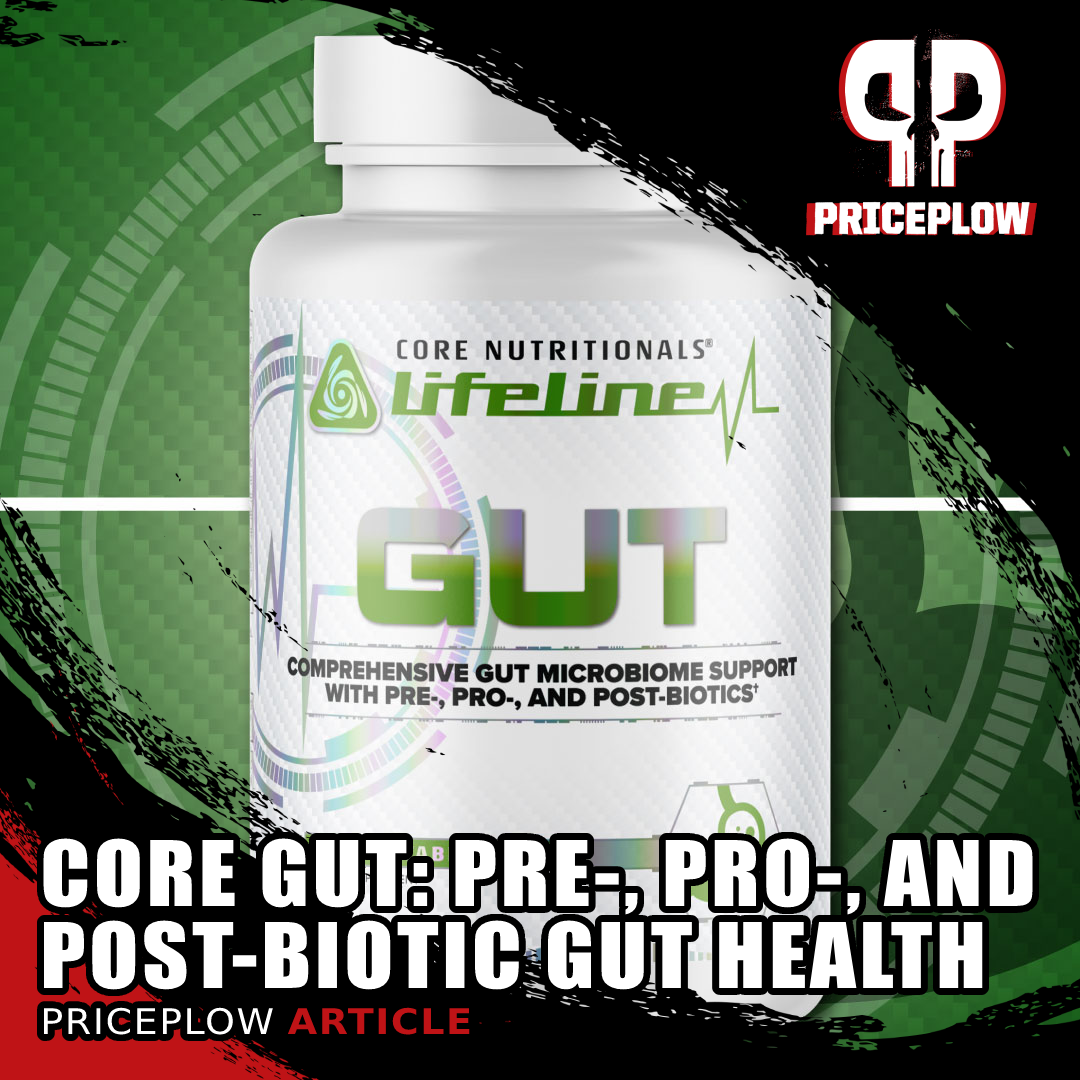
In five incredible capsules, Core GUT brings prebiotics, probiotics, postbiotics, and digestive enzymes to help improve your gut health and digestion!
-
Probiotics - Custom formulated non-proprietary blend of live organisms to provide the gut with beneficial bacterial support
-
Tributryin - This "postbiotic" provides the critical short-chain fatty acid butyrate, helping with proper digestive tract function and inflammatory response
-
Prebiotics - Using a prebiotic fiber, Core GUT provides the gut with the "raw materials" it needs to build a strong and healthy environment
-
Digestive enzymes - Added to ensure you can digest all types of food, ranging from fats to carbs to protein to milk sugars.
With these combined, this supplement and its three-pronged approach supports healthy gut bacteria and a strong gut lining, and this may lead to numerous downstream benefits that go beyond digestion, but even help with mood and immunity.
The details are covered below, but first, check our PricePlow-powered coupons and sign up for our Core Nutritionals news alerts, since more Lifeline supplements are on the way:
Core Nutritionals Lifeline - GUT – Deals and Price Drop Alerts
Get Price Alerts
No spam, no scams.
Disclosure: PricePlow relies on pricing from stores with which we have a business relationship. We work hard to keep pricing current, but you may find a better offer.
Posts are sponsored in part by the retailers and/or brands listed on this page.
This area is reserved for Team PricePlow's upcoming Ingredients video.
Subscribe to our channel and sign up for notifications so you catch it when it goes live!
Core GUT Ingredients
In five capsules (taken once daily, preferably with a meal), you'll get the following fully-disclosed formula:
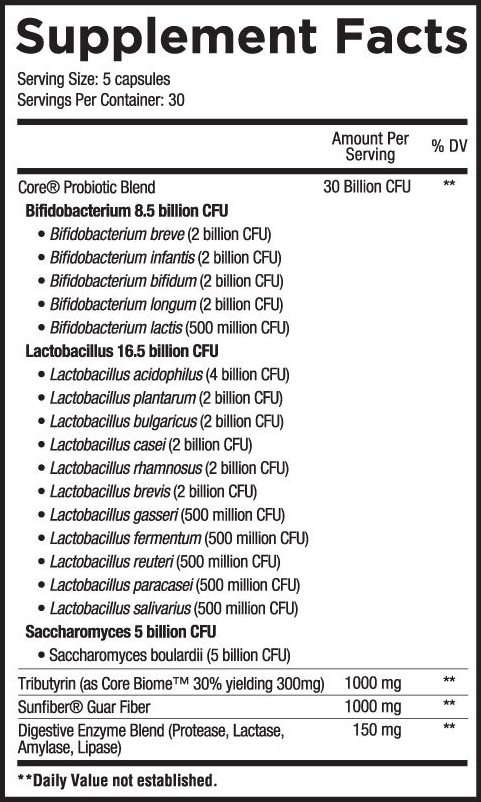
Prebiotics, Probiotics, Postbiotics, and Digestive Enzymes... and it's all open formula in Core GUT!
-
Core Probiotic Blend - 30 Billion CFU
In general, probiotics are living organisms that consist of healthy bacteria. There are various strains that have various metabolic functions, leading to numerous benefits when fed to your gut.[1]
When you see the unit of measurement "CFU", it stands for colony forming units, indicating the total number of viable cells inside.[2] In September of 2018, the FDA released a Guidance stating that these numbers should include the live cells, not inactive, nonviable, or dead ones.[3]
In Core GUT, don't be fooled by the word "blend" -- this is not proprietary! We rarely see probiotics labeled so well:
-
Bifidobacterium - 8.5 billion CFU
Alongside Lactobacillus (which is covered next), Bifidobacterium is the most common family of probiotics.[1] These live in the intestines and stomach and help to fight off harmful bacterium. They're often found in foods such as yogurt, buttermilk, kefir, sauerkraut, and even cured meat.
CORE Provides the following:
-
Bifidobacterium breve - 2 billion CFU
-
Bifidobacterium infantis - 2 billion CFU
-
Bifidobacterium bifidum - 2 billion CFU
-
Bifidobacterium longum - 2 billion CFU
-
Bifidobacterium lactis - 500 million CFU
From this family, we've seen the following benefits:
Core to SO many of our issues is gut health. Eliminating processed food will help tremendously, but what else can we do to restore our gut microbiota?
- Improvements to diarrhea, gas, allergies, and IBS[4,5]
- Reduction of bloating and abdominal discomfort[6]
- Helpful in fighting ulcerative colitis[7,8]
- Useful in the treatment of lung infections and other inflammatory conditions[9,10]
- Immune system support[11]
- Improved digestion and mineral uptake[12,13]
A diverse approach
Each strain provides its own unique benefits, since each one has its own metabolic process that digests and "resolves" differing bacterial concerns.
It's great to see that CORE dosed them large, but also dosed them wide -- we'd rather have 2 billion CFU of four different strains than 8 billion CFU of a single strain. Meanwhile, most other brands don't even tell you what's inside of their proprietary blends!
-
-
Lactobacillus - 16.5 billion CFU
The other most popular family of probiotics, and likely the most common, various lactobacillus strains help the body break down, digest, and absorb nutrients from food.[1]
With Core GUT, you get an incredible spectrum inside:
-
Lactobacillus acidophilus - 4 billion CFU
-
Lactobacillus plantarum - 2 billion CFU
-
Lactobacillus bulgaricus - 2 billion CFU
-
Lactobacillus casei - 2 billion CFU
-
Lactobacillus rhamnosus - 2 billion CFU
-
Lactobacillus brevis - 2 billion CFU
-
Lactobacillus gasseri - 500 million CFU
-
Lactobacillus fermentum - 500 million CFU
-
Lactobacillus reuteri - 500 million CFU
-
Lactobacillus paracasei - 500 million CFU
-
Lactobacillus salivarius - 500 million CFU
Together, these yield numerous potential benefits (the following list only scratches the surface):
- Treating lung (and other inflammatory) conditions[10]
- Fighting numerous digestive disorders (ulcerative colitis, Crohn's disease, IBS, and more)[14-17]
- Increased antioxidant activity[18]
- Improved ATP generation for cellular energy[19]
- Reduction of cholesterol[20]
- Anti-inflammatory and immune system benefits[21,22]
- Dental health and periodontal protection[23]
- Improvement of skin conditions[24]
The same statement applies - it's important to see a broad and powerful spectrum of probiotics in Core GUT. While many of the effects overlap -- such as fighting IBS, diarrhea, and common inflammatory disorders -- each added strain brings a few more weapons to the gut microbiome. It's tough to know which one you need, but if you're willing to take five capsules, you're going to get a serious armory for your gut.
-
-
Saccharomyces - 5 billion CFU
Gut is the first of many in the Core Lifeline Series
Saccharomyces boulardii is actually a probiotic yeast. It's commonly used for the prevention and therapy of various gastrointestinal disorders such as bacterial-caused diarrhea[25-27] and IBS.[26] There seem to be other benefits, but if you're ever dealing with diarrhea, this seems to be one of the best anti-bacterial approaches. It doesn't hurt that Core GUT has other ingredients above that work on the ailment in different ways as well.
-
-
Tributyrin (as CoreBiome 30%) - 1g, yielding 300mg
Known as a "postbiotic", tributyrin is one of the hottest new ingredients in the gut health scene, and there are still too few supplements using it.
Postbiotics?
With prebiotics (discussed next), you get fiber that healthy bacteria feed on in your digestive tract.[28] Meanwhile, probiotics are live bacteria taken to improve the gut's healthy bacteria levels,[1] with the countless benefits touched upon above.
But with "postbiotics", we get a bioactive compound that is normally produced from fiber fermentation that has several benefits to gut health as well.[29] It turns out that taking more is also beneficial, even if we're already getting the fiber and probiotics to generate them in the first place.
This leads us to butyric acid:
Butyrate: What is Butyric Acid?
"Schematic representation of microbial metabolic pathways and cross-feeding mechanisms, contributing to SCFA formation in the human gut. Shaded geometric shapes summarize routes of formation for each of the three main SCFA: acetate, propionate, and butyrate."[30]
Our healthy bacteria break down our foods and nutrients to provide nutrition for the body. When they break down fiber, however, something else happens: a fatty acid known as butyric acid gets generated.[31]
Butyric acid is a short chain fatty acid (SCFA) that's critical to gut health.[31] It's been linked to numerous critical biological processes such as immune system regulation, body weight maintenance, energy balance, and even cognitive function.[31] Butyrate helps supply energy within the colon, and when we're deficient, we may experience various illnesses, such as those discussed above that probiotics often help treat.
Benefits of Tributyrin
Scientists have found that rather than just hoping you have the right bacterial mix to ferment fibers, you can also supplement more - and tributyrin has been found to be a safe and bioavailable way to increase butyrate. Its supplementation has been connected to several benefits and biological processes:[29,31]
- Immune system improvements
- Anti-inflammatory actions, combating many GI issues
- Improved gene expression in digestive, gut, and GI systems
- Better cellular communication in beneficial microbes
- Improved microflora ratios (good vs. harmful bacteria)
- Antioxidant effects and oxidative stress reduction
- Better regular bowel movements and reduction of constipation[29,31]
This demonstrates that tributyrin (and butyrate in general) can help with food metabolism as well as providing additional healthy defense against pathogens.
There's one negative to the ingredient, but it's been fixed by Core Nutritionals: the smell. When you smell a banana candy scent in Core GUT, this is the reason why: since tributyrin is based upon butyrate, which smells quite bad (as beneficial as it is, butyrate is what makes bile smell so bad, for instance), it's been masked in CoreBiome so that you get the benefits without the bad smells.
-
Sunfiber Guar Fiber - 1g
Now this is how you do a gut health supplement. Have you tried tributyrin yet? If not, and you have any gut issues, then get this on your list!
SunFiber is a fermented dietary fiber that functions as a prebiotic, helping the body to increase bifidobacteria and lactobacillus levels in the gut. Several research studies have shown that it can normalize both constipation and diarrheal conditions,[32] leading to more regularity regardless of what issues you have.
This will also provide fuel for your gut to make its own butyrate. Even though Core GUT provides tributyrin, the goal is still to get your body to generate its own short chain fatty acids in the appropriate amounts.
In addition, this type of fiber has been shown to improve appetite[33] blood sugar control, which is something we'll always take[34] -- especially when we believe that the very dietary issues that cause high blood sugar are also the same ones that lead to poor gut health.
-
Digestive Enzyme Blend (protease, lactase, amylase, and lipase) - 150mg
When it comes to using digestive enzymes in their products, no brand is as consistent as Core Nutritionals, who adds them to many of their protein powders.
Core PRO Peanut Butter & Jelly is here, and it's strawberry jelly - the way it should be! Use it with your protease here in Core GUT
This is a blend made of the following:
- Protease - helps break down protein
- Lactase - helps break down lactose (milk sugars, great for users of CORE's proteins, although most of their proteins add them as well)
- Amylase - helps break down carbohydrates / starches
- Lipase - helps break down lipids / fats
For the athletes out there, it's also good to know that protease also helps show improved recovery benefits by reducing the damaging effects of exercise faster.[35,36]
For this reason, GUT should be taken with a protein-containing meal... but all meals should contain protein, so that's a given.
Dosage and Instructions
Simply take five capsules per day with food. You could attempt to mix them up across two meals, but if that strategy over-complicates things, then just take all five capsules once a day with food.
Core GUT: The Lifeline Series is off to a great start
Gut health is all the rage right now, and as always, the sports nutrition sector of the supplement industry are the ones doing things best. Probiotics have become increasingly popular over the past decade, with the research growing leaps and bounds. However, in other parts of the industry, the formulas simply are not. They're still proprietary, and they're still not using enough beneficial strains.

Doug Miller and his team at CORE Nutritionals always find a way to figure it out. Listen to him talk about recent events in Episode #050 of the PricePlow Podcast
Meanwhile, very few brands are using tributyrin, which we believe is the next big thing with gut health. Even fewer brands outside of sports nutrition are using it.
Leave it to Doug Miller and Core Nutritionals to solve both of those problems.
If this is your first look at the Core Lifeline Series, then get ready - we think some of the other formulas may be even better... but that all depends on what you and your body need.
If you're dealing with gut health issues, this one's a must-try. But as we always must say, the most important part is to remove the foods that are causing your gut problems -- and that's most often the refined sugars and toxic omega-6 seed oils (known as "vegetable oils"). Eliminate the bad, and add the good in Core GUT, and you're on your way to a better digestive system.
Core Nutritionals Lifeline - GUT – Deals and Price Drop Alerts
Get Price Alerts
No spam, no scams.
Disclosure: PricePlow relies on pricing from stores with which we have a business relationship. We work hard to keep pricing current, but you may find a better offer.
Posts are sponsored in part by the retailers and/or brands listed on this page.
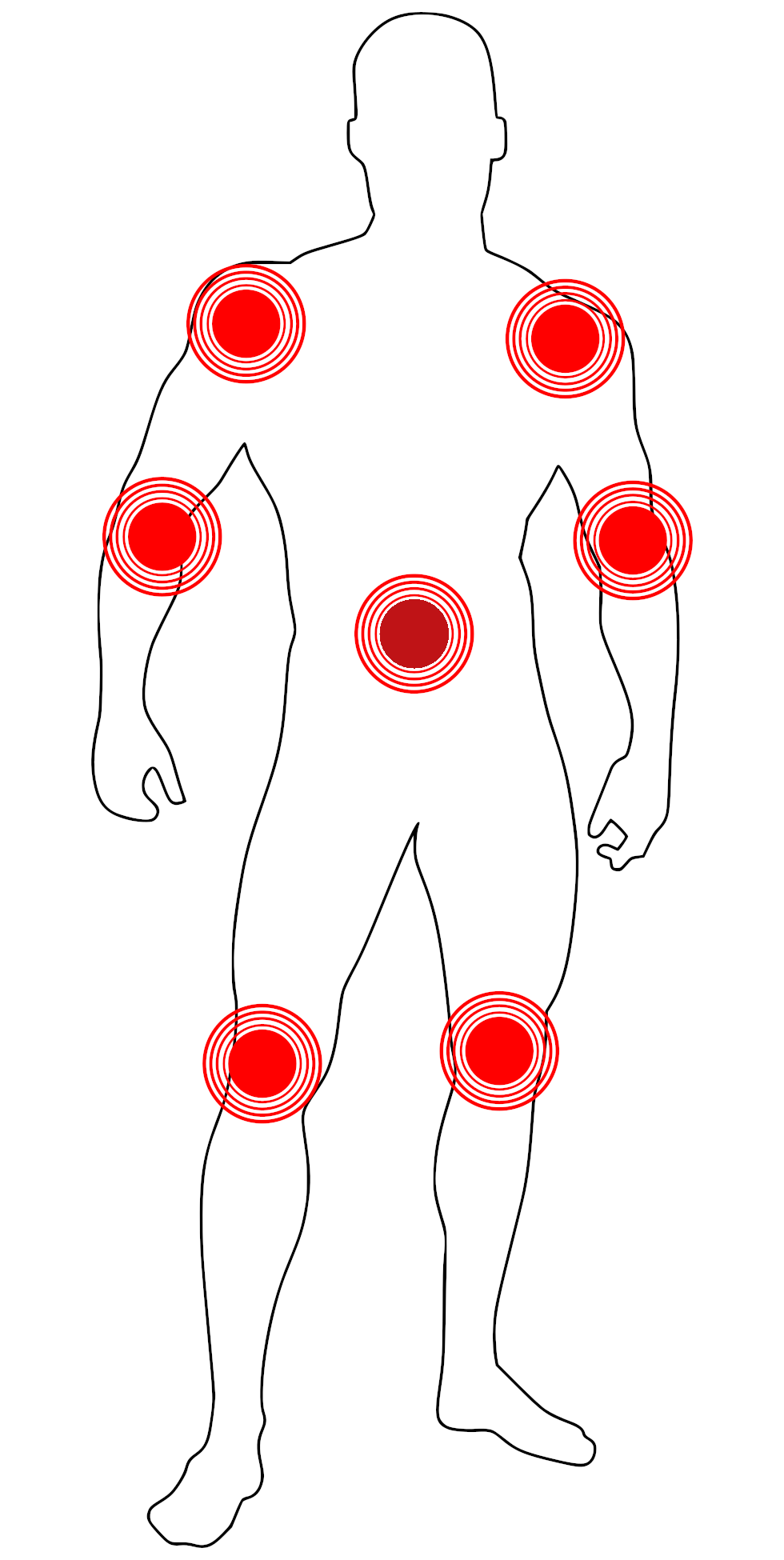
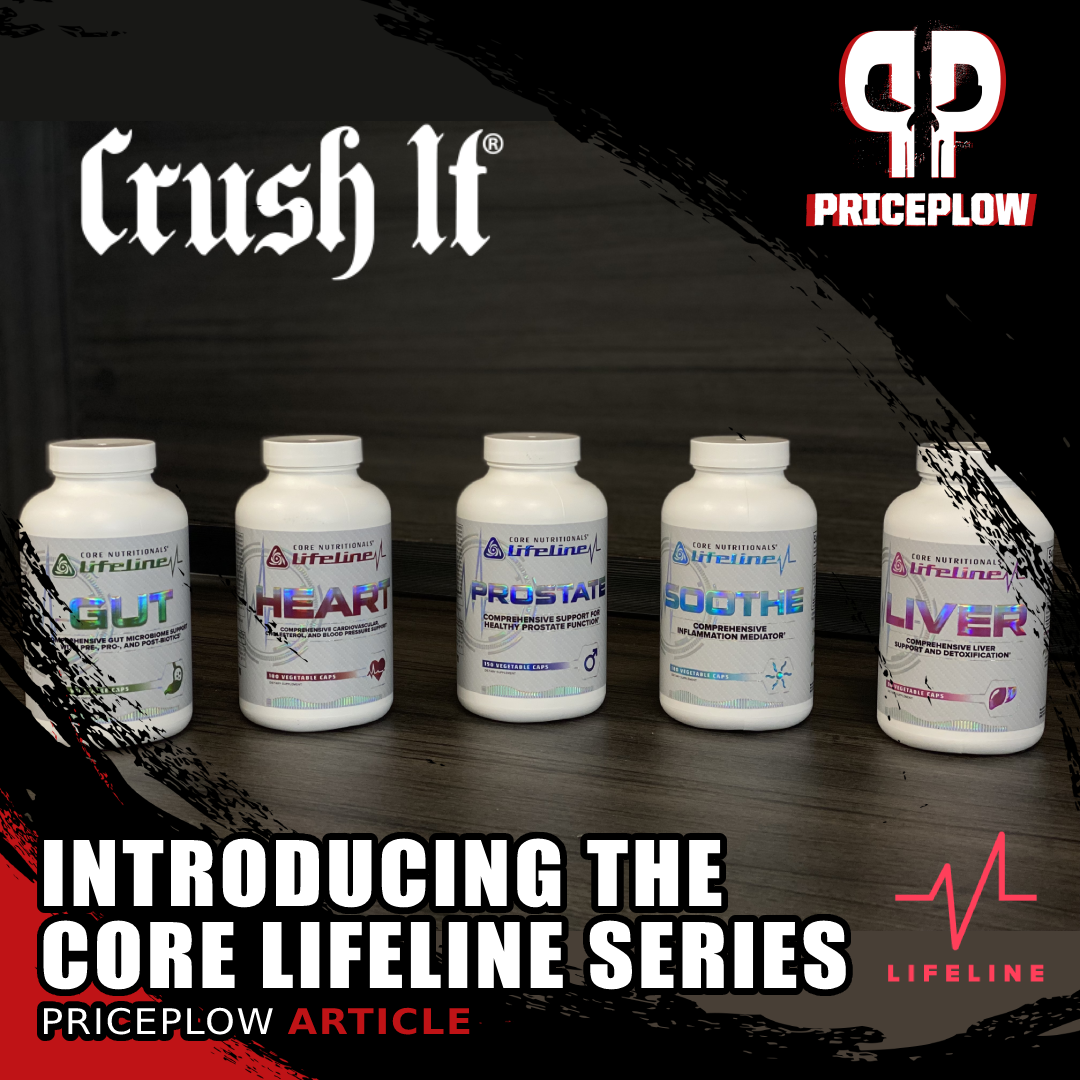
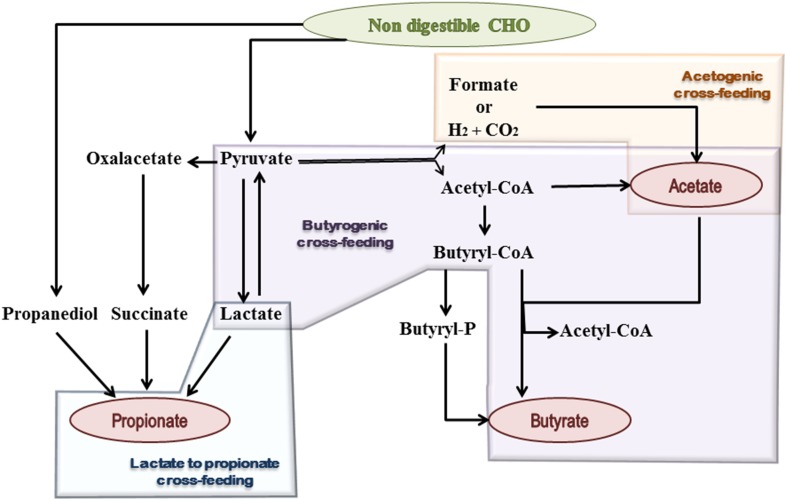
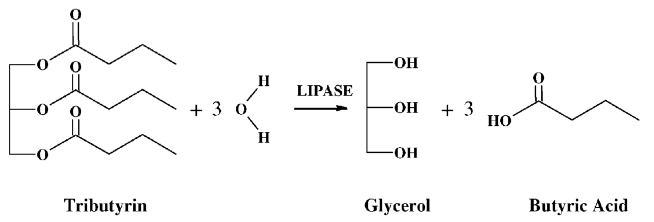
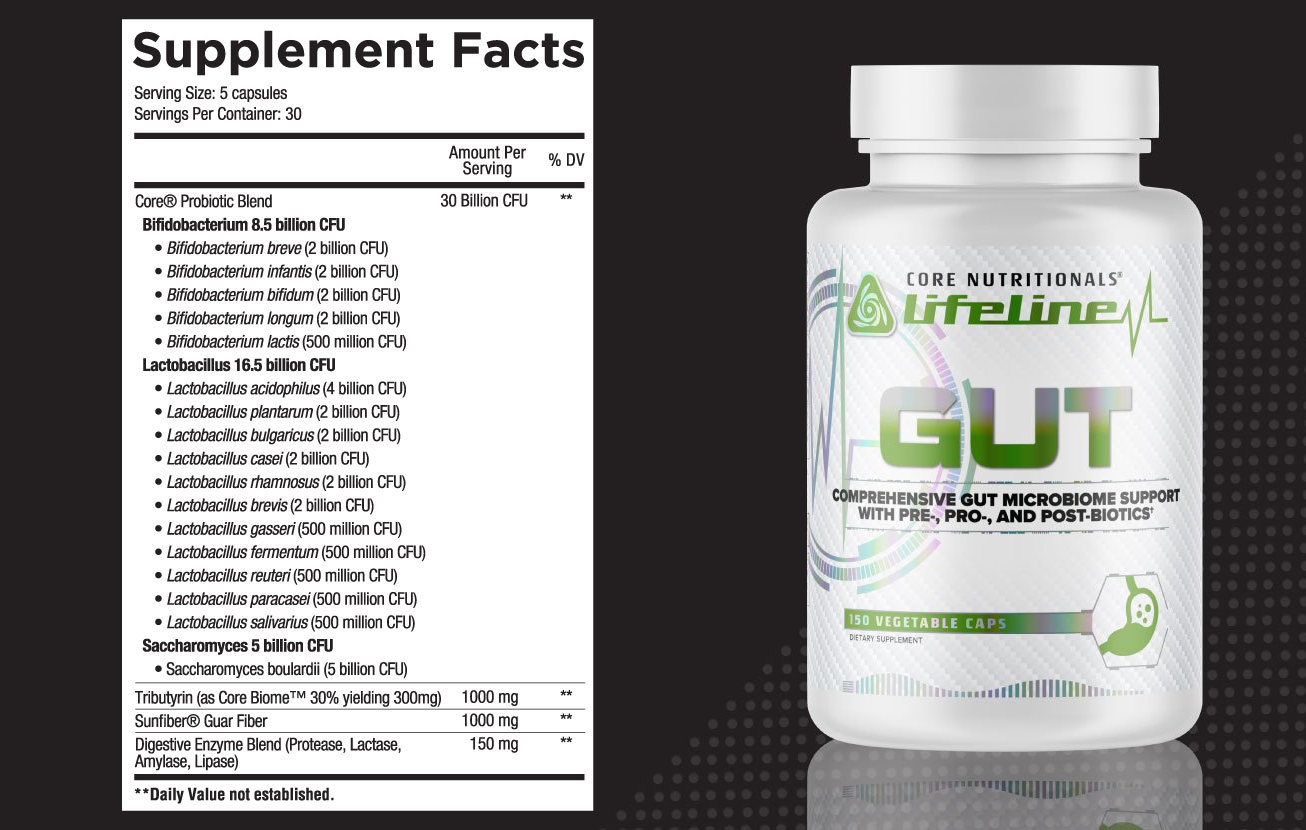
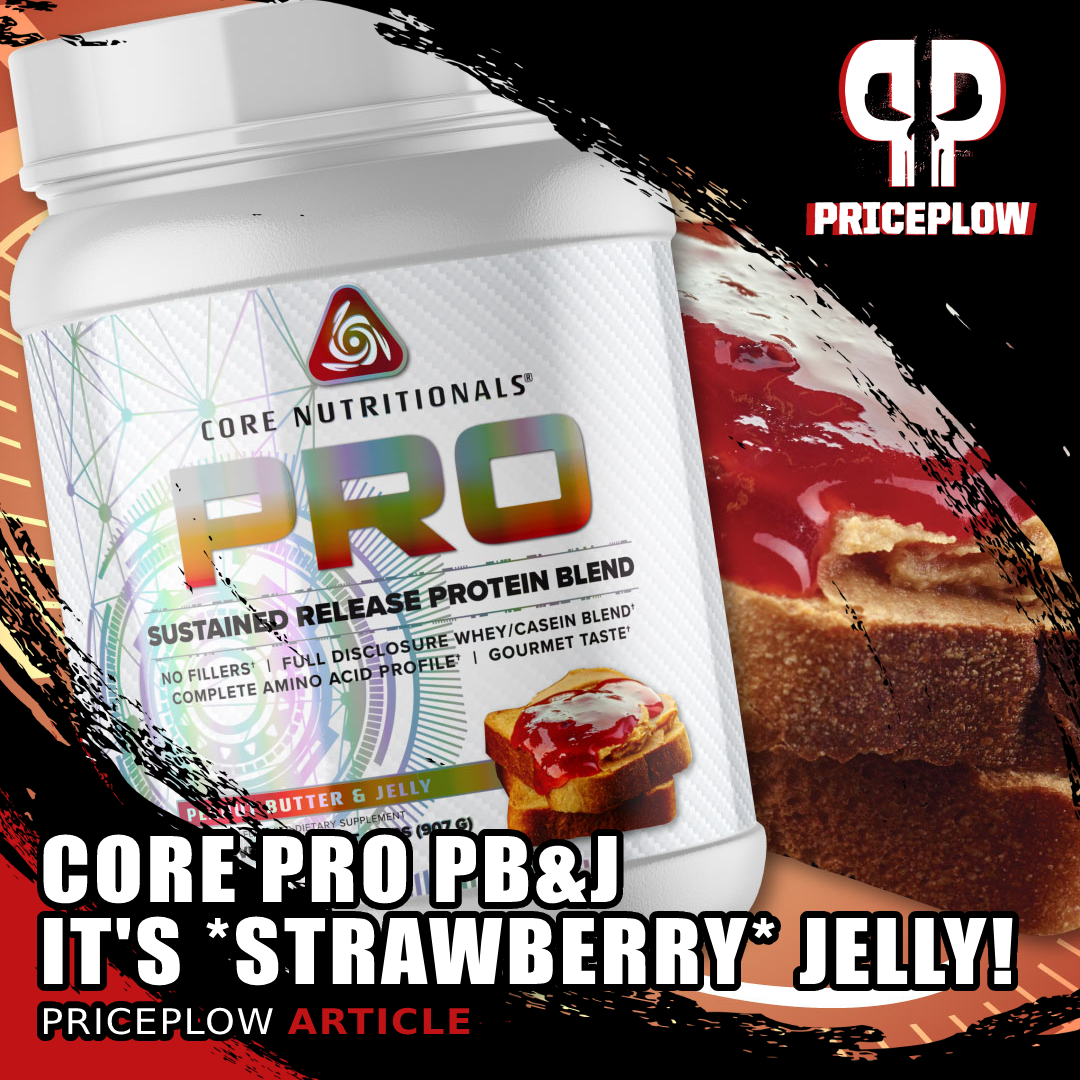
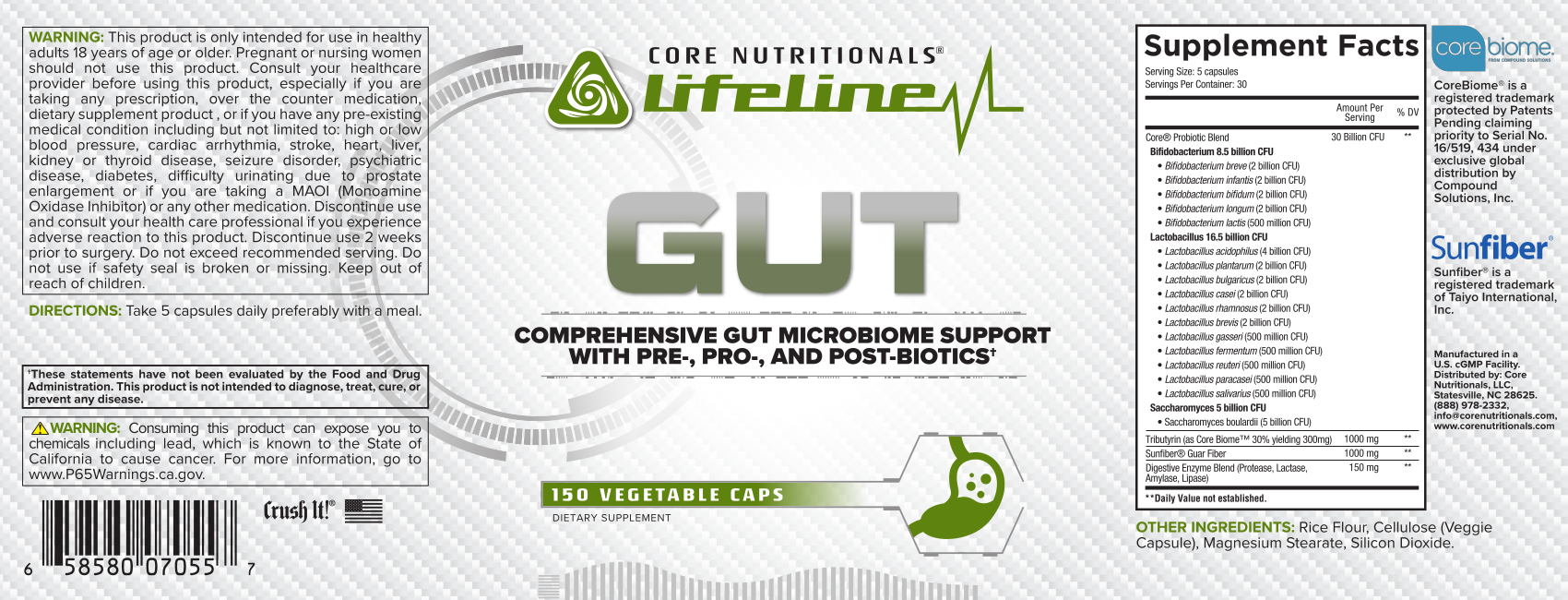


Comments and Discussion (Powered by the PricePlow Forum)